The story of presses begins with the most fundamental manufacturing act: shaping material by force. For thousands of years that force was delivered by muscle—smiths hot-forged iron with hand hammers and simple tools.
As communities organized around waterpower in the late Middle Ages, cam-driven helve hammers and trip hammers multiplied a human’s output, establishing the first mechanized metalworking “presses.”
By the Renaissance, screw presses—adapted from olive and wine pressing—were applied to coining and early metal forming. Their mechanical advantage produced greater uniformity and repeatability than a hammer could.
The Industrial Revolution then transformed forming pressure from intermittent and manual to continuous and mechanical.
Nasmyth’s steam hammer (1839) enabled larger forgings with controllable blows; Joseph Bramah’s hydraulic press (1795) turned fluid power into a reliable, scalable source of force. Bramah’s principle—force multiplication through fluid pressure and area—still underpins modern hydraulic presses.
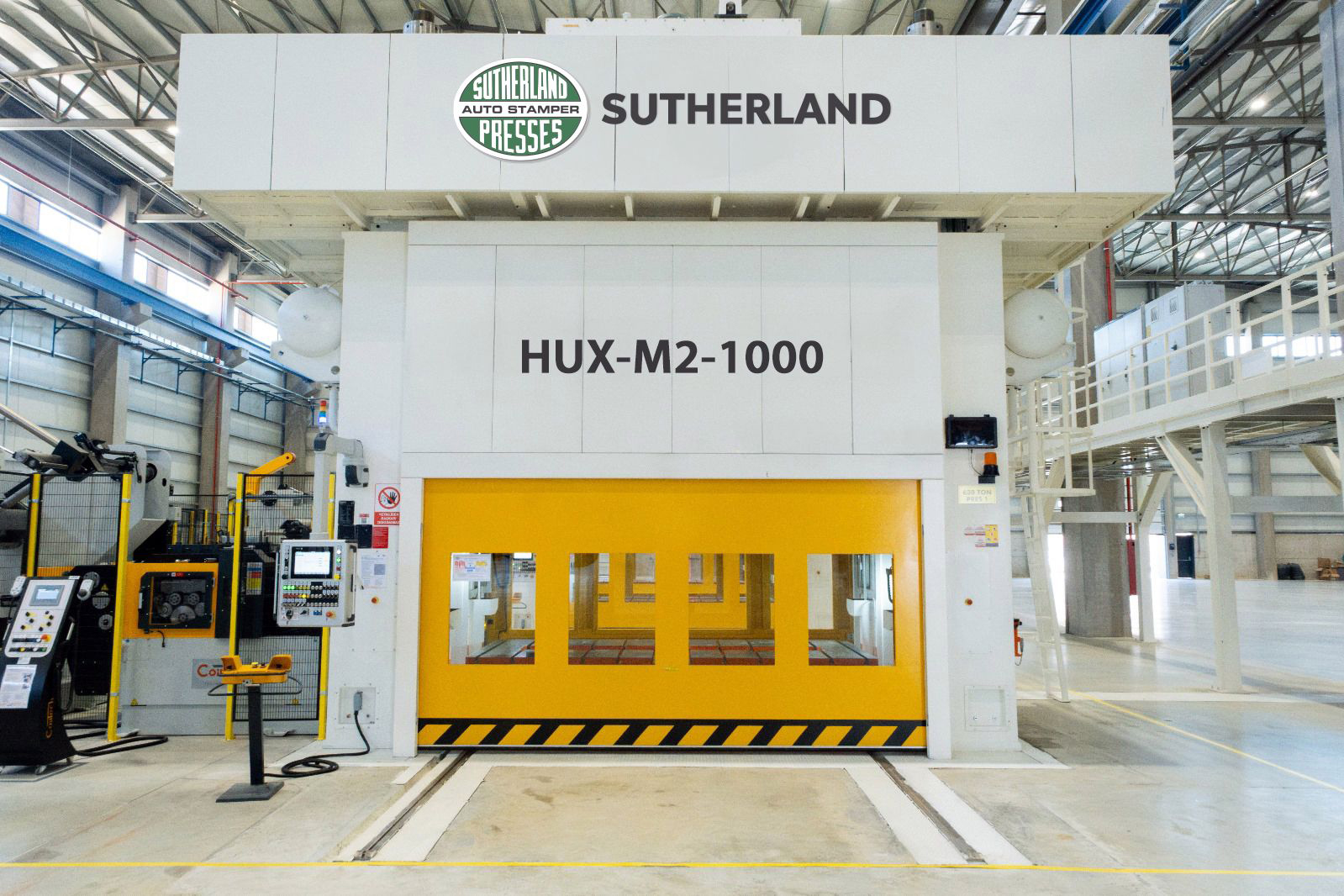
In the late 19th and early 20th centuries, the rapid growth of sheet steel use in appliances and, most significantly, automobiles created a new production logic: high-speed, high-repeatability stamping.
Flywheel-driven mechanical presses with crank or eccentric drives, progressively guided slides, and increasingly rigid frames emerged as the backbone of mass production. Progressive dies and transfer tooling allowed multiple operations in a single press stroke, multiplying output while elevating the importance of press rigidity, parallelism, and slide guidance to protect tooling and control quality.
After World War II, the interplay between metallurgy, bearings, and fabrication matured presses further. Straight-side frames reduced angular deflection under load compared with open C-frames, making tight tolerances possible at higher speeds.
At the same time, forging technology advanced with closed-die presses and screw presses paired to controlled heating, producing parts with excellent grain flow and strength. The second half of the 20th century also saw hydraulic presses become indispensable for deep drawing, coining, and jobs requiring full tonnage throughout the stroke—something mechanical presses deliver only near bottom dead center.
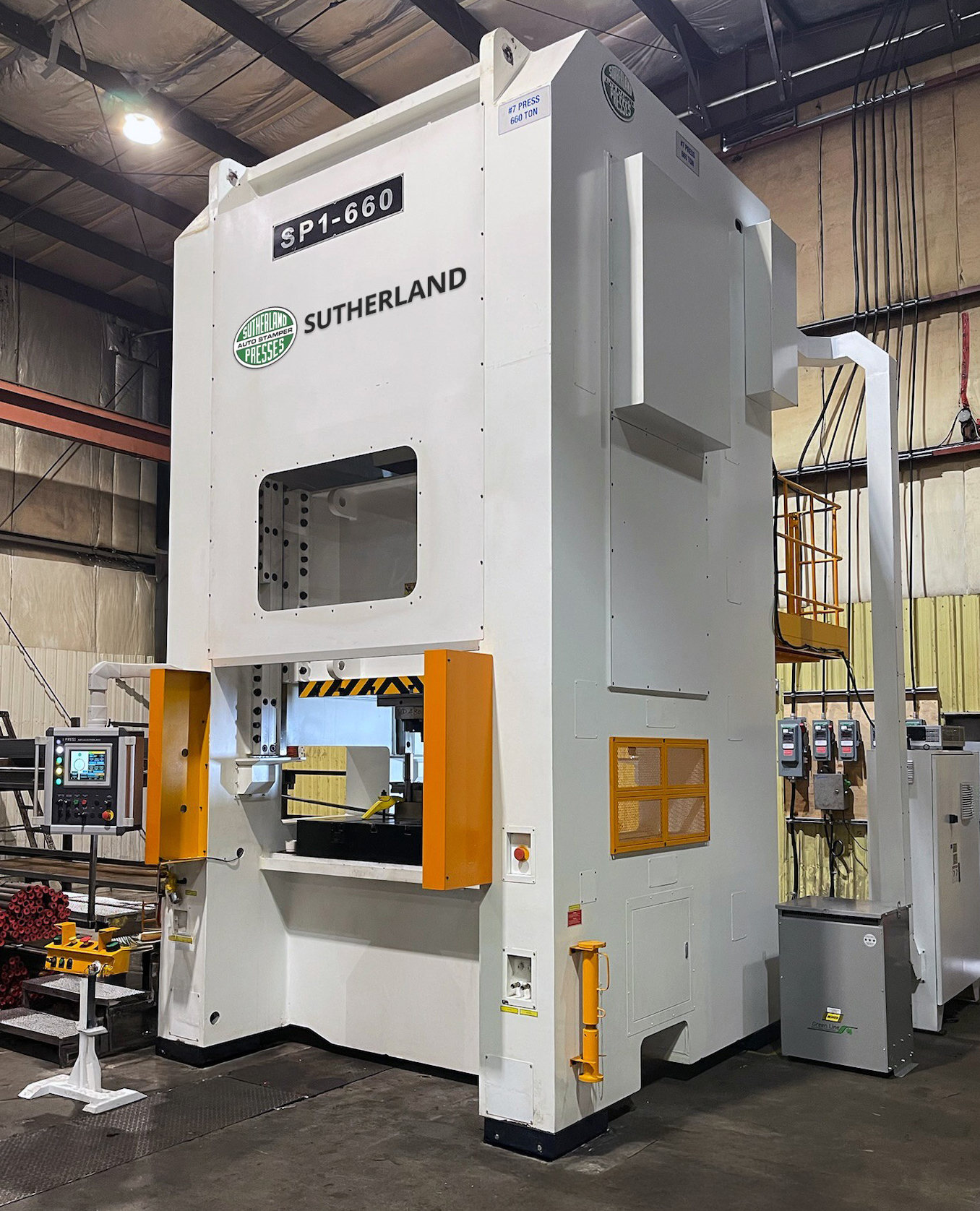
Controls were the quiet revolution. Early presses were governed by cam timers and hardwired relays. As safety requirements increased and automation proliferated, electronic controls replaced electromechanics, and then programmable logic controllers (PLCs) replaced hardwired logic altogether.
Human–machine interfaces (HMIs) made setups faster and more visual. As standards such as Category 3 and Performance Level d took hold, safety became an engineered architecture rather than an afterthought. Integrated safety PLCs, light curtains, redundant valves, and monitored interlocks became standard, reducing risk while improving diagnostics and uptime.
The 21st century has added two accelerants. First, servo technology—applied to hydraulics through servo-pumps and to mechanical presses through servo drives—gave users precise control of motion and tonnage profiles, not just cycle speed. In hydraulic presses, multi-point speed and pressure profiles within a single stroke improved forming, reduced scrap, and protected surface finish.
In mechanical presses, servo drives enabled programmable stroke shapes for difficult materials and complex dies. Second, connectivity and analytics changed the way presses are run and maintained. PLCs integrated with enterprise networks, HMIs became thin clients for data-rich operations, and condition monitoring turned maintenance from reactive to predictive.
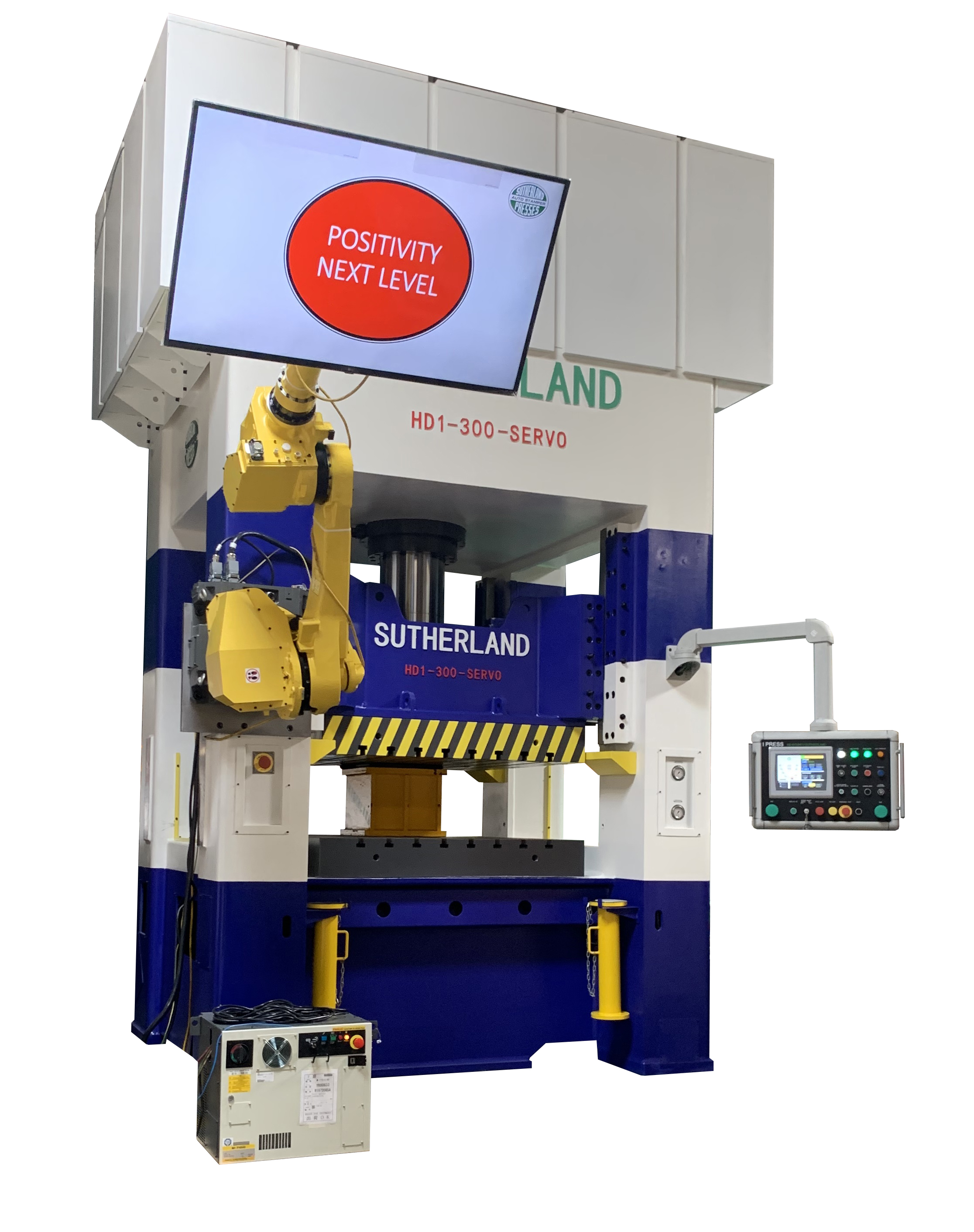
While metals drove the early narrative, composites—both thermoset and thermoplastic—created new demands for presses. Compression molding dates back a century, with early thermosets like Bakelite.
As glass and carbon fiber reinforcements became common, matched-die compression molding, sheet molding compound (SMC), and bulk molding compound (BMC) took off in automotive and appliance. In aerospace, autoclaves dominated for decades, but presses increasingly handle high-pressure consolidation for specific parts and thermoplastic laminates where cycle time matters.
Modern composite presses require heated platens for controlled temperature ramps, high daylight for thick tools, long strokes for draw and de-mold, and—critically—excellent platen parallelism and four-corner level control to ensure uniform thickness and fiber volume fraction. Sensors and controls must orchestrate pressure–temperature–time profiles while protecting expensive molds.
Across both metals and composites, the physics have not changed: rigidity, minimal deflection, repeatable motion, and reliable control determine part quality, tool life, and throughput. What has changed is the toolkit: servo motion, safety-engineered controls, four-corner leveling, guided slides, and data-driven diagnostics. The press is no longer an isolated machine; it is the orchestrator of a cell with feeds, transfers, cushions, heaters, and sensors.
This evolution is the context in which Sutherland Presses has built its legacy. Since 1946, Sutherland has focused on high-performance mechanical, servo-hydraulic, hydraulic, and forge presses across North America, combining robust frames and slide guidance with modern control architectures.
The company’s “Controls First Philosophy” is embodied in the I-PRESS control platform, based on Allen-Bradley or Siemens hardware, with safety engineered to Category 3 and Performance Level d. That means safety, motion, and automation are designed as one system, with integrated PLC/HMI, die protection, real-time tonnage monitoring, and data capture that align with international standards.
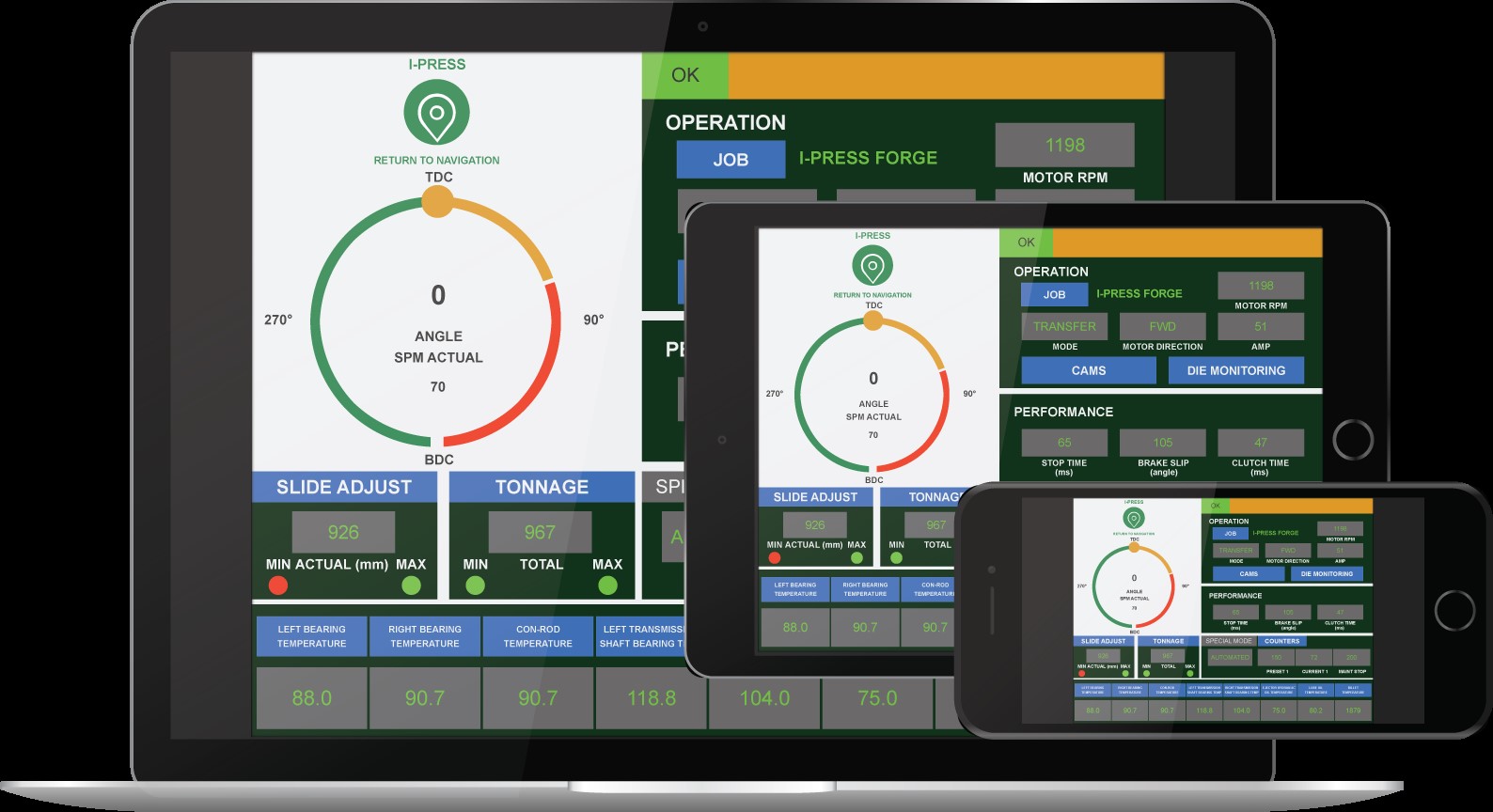
For metal stamping, Sutherland’s mechanical and servo-hydraulic lines prioritize frame rigidity, minimal deflection, and long-life guidance—essentials for progressive and transfer work.
For forging and fasteners, its high-tonnage solutions bring the consistent force and durability required for closed-die operations. In composites, Sutherland has highlighted capabilities at events like CAMX, showcasing servo-hydraulic presses designed for compression molding: long strokes, high daylight, robust frames with 8-point full-length slide guidance, and optional four-corner level monitoring to maintain platen parallelism under load.
Systems are available with major fluid power components (such as Rexroth) and configurable mold areas for large-format parts, with published examples including a 3300 US ton, four-cylinder configuration and offerings ranging from 200 to 10,000 tons for composite applications. Throughout, controls integration is central: I-PRESS manages multi-point speed and pressure profiles, logs process data for audits, and supports remote diagnostics to reduce downtime.
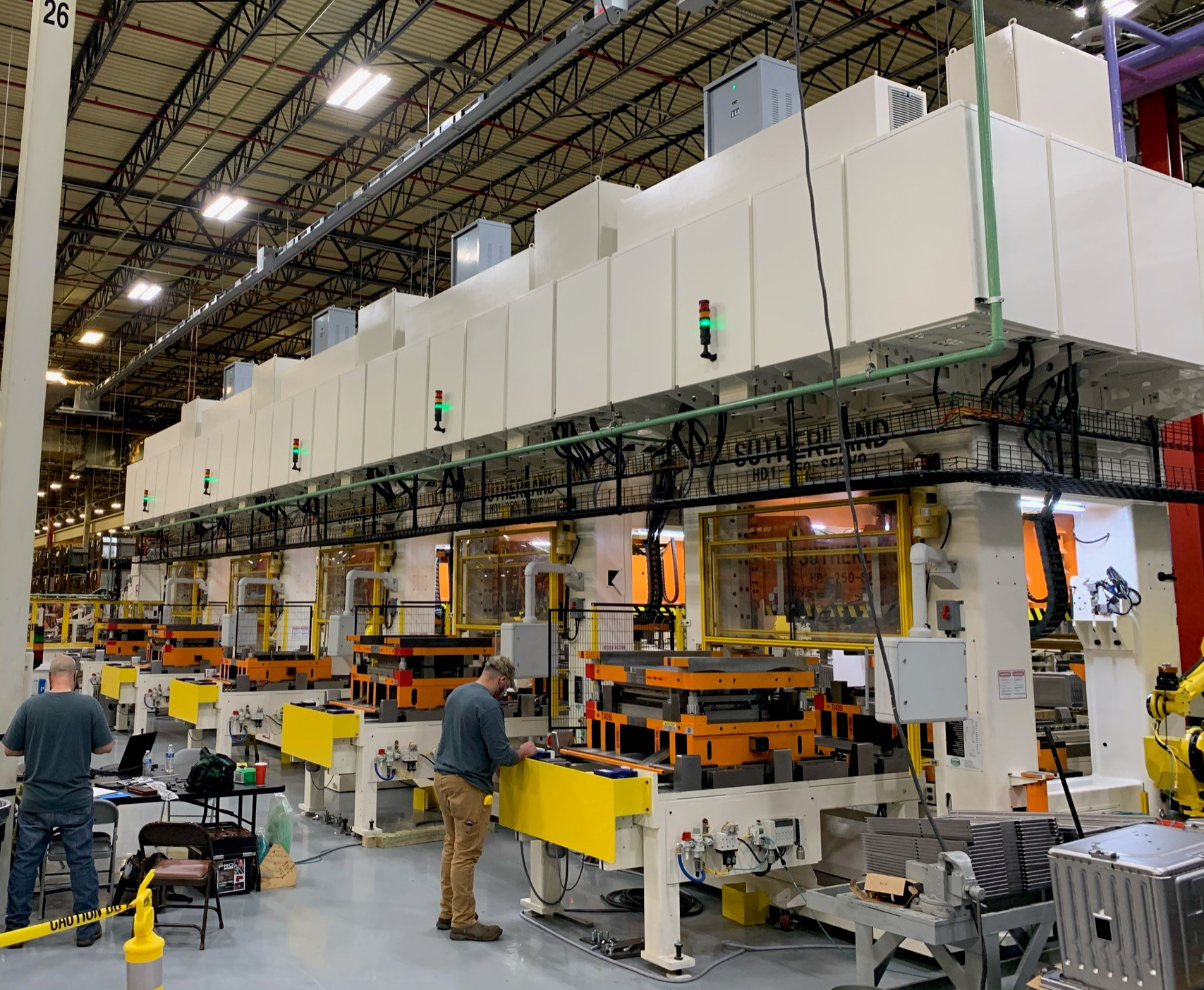
What ties the long arc of press history to Sutherland’s present offering is a consistent engineering ethos:
Mechanical integrity first. Heavy steel frames, stress-relieved and precision machined, deliver the rigidity and minimal deflection that quality and die life demand.
Guidance and alignment matter. Full-length slide guidance and parallelism protect tooling, reduce scrap, and support higher speeds with less vibration and snap-through impact.
I-PRESS Controls as an equal pillar. PLC/HMI platforms built on mainstream hardware, with safety at Cat 3/PLd, simplify service, speed training, and integrate cleanly with feeds, transfers, heaters, cushions, and plant networks.
Data for decisions. Real-time diagnostics, alarms, and analytics enable predictive maintenance and continuous improvement.
Application-specific motion. Servo-hydraulic profiles or servo drives adapt stroke shapes and pressures to the material and tool, whether deep drawing steel or consolidating thermoplastic laminates.

Lifecycle partnership. Turnkey installation, training,maintenance programs, and responsive parts/service ensure the press keepspaying back for decades.
As manufacturers push into lighter, stronger materials,tighter tolerances, and more traceable production, expectations of presses willcontinue to rise. The winning machines will look like the best of thepast—stiff, square, and reliable—enhanced by modern safety, motion, andintelligence. That is the space Sutherland Presses has chosen to lead: marryingnearly eight decades of press-building heritage with advanced controls,composite-ready platforms, and customer-first service.
If your roadmap calls for upgrading stamping, launching acomposite line, or modernizing controls, Sutherland’s portfolio spans the needsof today’s pressrooms with the reliability and insight required for tomorrow’s.Press on and forge ahead—with equipment and controls designed for the nextchapter of metal and composite forming.
📩 For more information or to request a brochure, contact us today at info@sutherlandpresses.com or call us at +1-310-453-691.
Team Sutherland


The story of presses begins with the most fundamental manufacturing act: shaping material by force. For thousands of years that force was delivered by muscle—smiths hot-forged iron with hand hammers and simple tools.
As communities organized around waterpower in the late Middle Ages, cam-driven helve hammers and trip hammers multiplied a human’s output, establishing the first mechanized metalworking “presses.”
By the Renaissance, screw presses—adapted from olive and wine pressing—were applied to coining and early metal forming. Their mechanical advantage produced greater uniformity and repeatability than a hammer could.
The Industrial Revolution then transformed forming pressure from intermittent and manual to continuous and mechanical.
Nasmyth’s steam hammer (1839) enabled larger forgings with controllable blows; Joseph Bramah’s hydraulic press (1795) turned fluid power into a reliable, scalable source of force. Bramah’s principle—force multiplication through fluid pressure and area—still underpins modern hydraulic presses.
